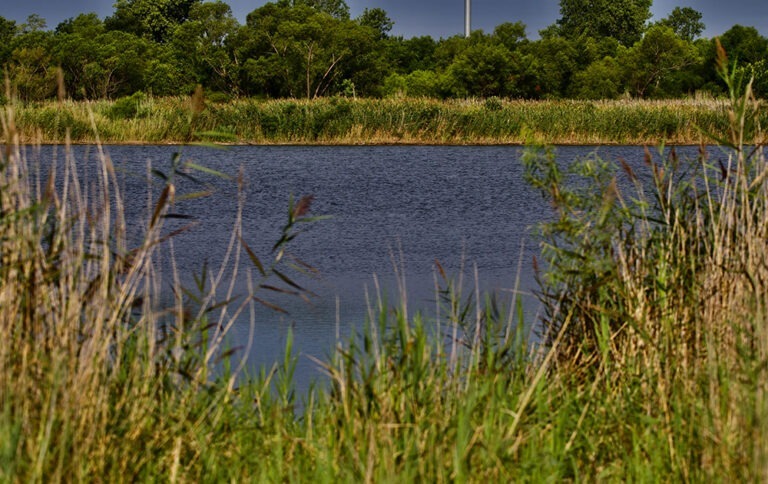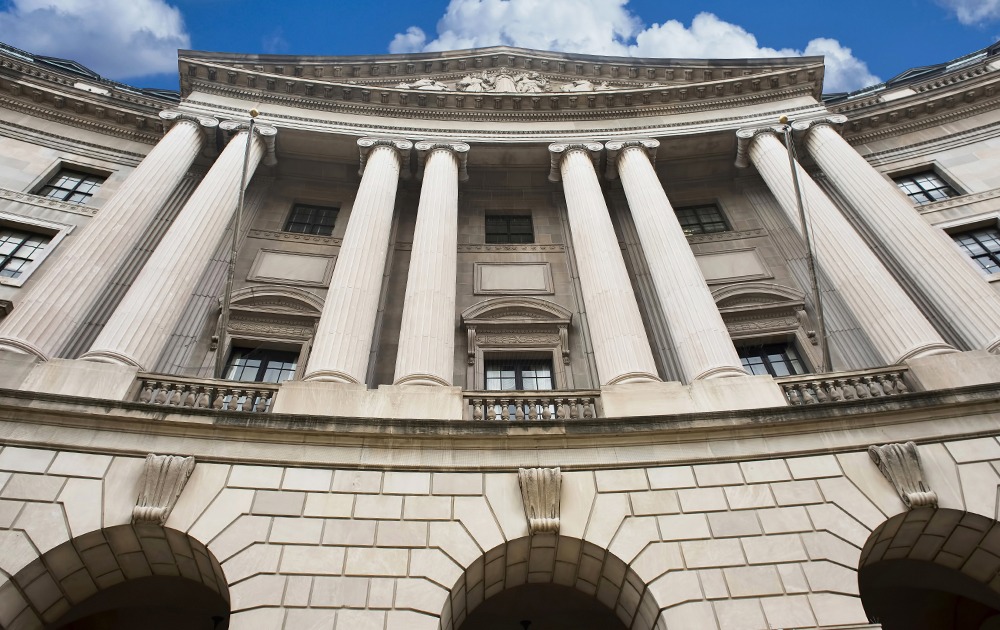The U.S. Environmental Protection Agency (EPA) has prioritized the regulation of coal combustion residuals (CCR). The latest agency action related to CCR addresses so-called “legacy units” — inactive surface impoundments at facilities that stopped generating electricity before the EPA’s October 2015 CCR rule.
The proposed rule, titled Hazardous and Solid Waste Management System: Disposal of Coal Combustion Residuals From Electric Utilities; Legacy CCR Surface Impoundments (which we will refer to as the Legacy Rule), has broad implications for the universe of CCR units and beneficial use. Utilities should take note now of requirements that will go into effect six months after the regulation becomes final, which the EPA communicated is likely to happen in April 2024. In this article, we take a closer look at potential impacts and some recycling practices that could be swept up under the rule, as well as how utilities and facility owners can prepare.
The EPA’s current proposal and CCR regulatory history
When the EPA’s CCR rule became effective in October 2015, legacy units were exempt. On May 18, 2023, the EPA proposed regulating both legacy units and areas where CCR were disposed of or managed outside of CCR units at facilities that produced electricity for the power grid and at any period had produced CCR. In doing so, the EPA is creating a new category termed CCR Management Units (CCRMU), which includes CCR placed on land at any time, except for specific beneficial use situations, such as haul roads.
CCR regulatory history
Before we delve into the proposed regulations, it is important to understand the regulatory history and milestones that led to this proposal and the EPA’s positions on risks associated with these units — particularly as this proposal will impact some previously unregulated facilities.
- On April 17, 2015, the EPA promulgated minimum criteria for existing and new CCR landfills and surface impoundments, imposing requirements on inactive surface impoundments at active facilities. Legacy units were not included in this rulemaking.
- On Aug. 21, 2018, the U.S. Court of Appeals for the D.C. Circuit decided in favor of environmental petitioners on two claims: First, the court ruled on the EPA’s failure to require the closure of unlined surface impoundments, and second — pertinent to this latest rulemaking — the court vacated the exemption for legacy units and remanded the issue back to the EPA.
- On Oct. 14, 2020, the EPA published an Advance Notice of Proposed Rulemaking, requesting comments on the universe of legacy units and criteria for identifying legacy units. Environmental nongovernmental organizations held that the regulation of legacy units should extend to the placement of CCR on land outside of impoundments and landfills.
- On Jan. 11, 2022, the EPA released the first set of decisions on a handful of “Part A demonstrations” under the CCR rule, which contained embedded policy positions that the agency had not previously fully articulated. This set of decisions included the interpretation that infiltration of liquids into the waste could encompass any kind of movement of liquids — including the movement of groundwater “filtering or permeating from any direction” into the CCR unit — resulting in later litigation.
- On May 18, 2023, the EPA proposed the rulemaking discussed in this article to respond to the D.C. Circuit and amend the CCR rule, with a 60-day comment period ending July 17, 2023.
Key details of the EPA’s proposed legacy rule
The current proposal establishes regulatory requirements for legacy CCR surface impoundments but with ambitious compliance deadlines. The EPA proposes defining legacy CCR surface impoundments as “a surface impoundment that is located at a power plant that ceased generating power prior to Oct. 19, 2015, and the surface impoundment contained both CCR and liquids on or after the effective date of the 2015 CCR rule (i.e., Oct. 19, 2015).”
The EPA does not consider the October 2015 date to be “retroactive” but is still inviting comments on the date. The EPA proposes including a provision at § 257.50(e), specifying that legacy CCR surface impoundments are subject to 40 CFR part 257, subpart D with a tailored compliance schedule and excluding location restrictions and liner design criteria.
New proposed regulatory requirements include applicability documentation, site security, and certification of closure by removal for legacy impoundments that closed by removal before the effective date of the final rule. According to the EPA, the associated compliance deadlines are as fast as feasible, and the EPA is encouraging specific comments for situations that would not be feasible.
Immediate trigger of new requirements: When the proposed Legacy Rule takes effect, some new requirements for legacy units and CCRMU will be immediately triggered. Additionally, some utilities that were not previously regulated under the CCR rule will then be regulated. Utilities will likely need to take extensive action now to be ready.
Haley & Aldrich’s CCR experts can help utilities develop a no-regrets game plan to guide you through the regulatory uncertainty before the rule becomes final.
What this means: Owners and operators of legacy CCR surface impoundments will be required to comply with existing requirements in the CCR regulations for structural stability assessments; air criteria; inspections; groundwater monitoring and corrective action; closure and post-closure care, recordkeeping, and notification; and a publicly accessible internet site. Importantly, the owner does not have to be a utility. If a facility with a legacy unit had previously provided power to the electrical grid, it is subject to the rule.
Given that the definition of a legacy unit hinges on Oct. 19, 2015 — almost eight years ago — circumstances surrounding these legacy units have often been altered, whether by closure through a state-approved program or consent agreement or by changes in facility ownership. Additionally, the definition of “surface impoundments” hinges on how the EPA defines “liquids.” Even though the EPA’s discussion of liquids aligns with its earlier Part A determinations, the definition is still problematic, considering pending litigation on infiltration referring to the migration of movement of liquid into or through a CCR unit from any direction.
Timeline: Legacy surface impoundments compliance deadlines
On rule’s effective date (six months after finalization):
- Establish CCR website.
- Document applicability.
- Install permanent marker.
- Implement site security.
- Prepare fugitive dust plan.
- Start weekly inspections.
- Start monthly monitoring of instrumentation.
At three months:
- Compile construction history.
- Complete:
- Hazard potential classification.
- Structural stability assessment.
- Safety factor assessment.
- Initial annual inspection.
At six months:
- Install groundwater monitoring system.
- Develop groundwater sampling and analysis program.
At nine months:
- Prepare emergency action plan.
- Prepare inflow design flood control system plan.
At 12 months:
- Prepare:
- Closure plan.
- Post-closure care plan.
- Initiate closure.
At 24 months:
- Initiate detection and assessment monitoring simultaneously.
- Evaluate groundwater for a statistically significant increase (SSI) and a statistically significant level (SSL).
Annual Groundwater Monitoring and Corrective Action Reports (GWMCA) are due by January 31 of the year following the installation of a groundwater monitoring system.
It defines units with liquids as those that include groundwater and pore water. The EPA defines a “legacy surface impoundment” as one that contained both CCR and liquids on or after Oct. 19, 2015. The EPA considers free water, pore water, standing water, and groundwater to be liquids under the existing regulation and does not differentiate the source of the liquid. The EPA’s position is that any water contact within the unit — even groundwater that flows intermittently or laterally through the unit — has the same potential to create leachate and contribute to hydraulic head and flows driven by hydraulic gradients.
What this means: Previously closed CCR units that have the potential to intersect with groundwater may be considered legacy units by the EPA. This poses regulatory uncertainty for CCR units that were considered closed under state programs and those that were closed and repurposed for other uses (including those with overlying infrastructure). With the EPA’s proposed interpretation of liquids and infiltration, and in light of pending litigation, regulatory uncertainty continues.
It addresses risks from CCR solid waste management that involves direct placement on land. The EPA proposes broadly defining a CCRMU as any area of land on which any noncontainerized accumulations of CCR are received, placed, or otherwise managed that is not a CCR unit. This definition includes any areas with CCR on the ground, such as structural fill sites; areas with CCR placed below currently regulated CCR units, evaporation ponds, or secondary or tertiary finishing ponds that have not been properly cleaned; and haul roads, if the use does not meet the definition of beneficial use. The EPA is proposing to extend a subset of the CCR rule requirements — including groundwater monitoring, corrective action, closure, and post-closure care — to CCRMUs.
What this means: Prior beneficial use applications, such as haul roads or structural fill sites — even those conducted according to ASTM International standards and in compliance with state programs — may be subject to some of the Legacy Rule requirements at facilities that once produced CCR. Some sites may even be under new ownership and outside of the utility’s control, so having an inventory of CCRMUs and developing a risk management strategy may be warranted.
Timeline: CCRMU compliance deadlines
On rule’s effective date (six months after finalization):
At three months:
- Complete facility evaluation report.
At six months:
- Install groundwater monitoring system.
- Develop groundwater sampling and analysis program.
At 12 months:
- Prepare:
- Closure plan.
- Post-closure care plan.
- Initiate closure
At 24 months:
- Initiate detection and assessment monitoring simultaneously.
- Evaluate groundwater for SSI and SSL.
Annual GWMCA reports are due by January 31 of the year following the installation of a groundwater monitoring system.
It clarifies the definitions of “feasible” and “technically feasible” and makes other technical corrections. The EPA proposes to clarify that the definitions of ‘‘feasible’’ and ‘‘technically feasible’’ are the same and to take comment on extending the period for document retention and posting beyond the current five-year retention. It also proposes a number of other technical corrections.
The proposed Legacy Rule addresses environmental justice (EJ): The Preamble includes a discussion of how the proposed rule will reduce existing disproportionate and adverse effects on many environmentally or economically burdened communities near legacy CCR surface impoundments. Haley & Aldrich’s EJ experts can help you develop a strategy to address EJ issues.
Key policy issues raised by the EPA’s proposal
Closure and corrective action timelines
The proposal applies to inactive CCR surface impoundments at active and inactive electric utilities or independent power producers, regardless of how electricity has been (or was) produced after October 2015. This broadens the CCR rule’s applicability to facilities where fossil units closed before October 2015 but may have been used for renewable or hydropower generation after that date. Accordingly, all facilities, regardless of fuel type, would fall under the rule, yet screening for fuel type and knowing which sites never produced CCR — such as gas- or hydro-only sites — will matter. Demonstrating that an open or closed facility has never produced CCR will become the first step to showing that legacy units or CCRMUs do not exist at the subject site.
The EPA is proposing that, in most cases, the existing CCR rule requirements would apply to legacy CCR surface impoundments, except for one revision to the existing groundwater monitoring requirements. This revision requires concurrent sampling and analysis of Appendix III and IV constituents specified in the CCR rule. This combined sampling and analysis requirement intentionally expedites the initiation of corrective measures by at least six months. Closure is required for all legacy units, regardless of the results of the groundwater monitoring program.
The EPA is proposing to establish two new requirements specific to legacy CCR surface impoundments: a reporting requirement and a new security requirement to restrict public access to these sites. Both of these requirements pose issues, particularly the security requirement, which may be unnecessary in many cases and could also hinder redevelopment.
For sites that have completed closure by removal, the proposed security requirement is both unnecessary and impractical because the actual legacy unit or CCRMU no longer physically exists. Also, many sites have been closed by removal under state oversight and in a manner protective of human health — requiring investment from utilities to excavate, monitor, and otherwise meet state requirements for closure and redevelopment. Some of those sites have been converted to constructed wetlands or are designated for other redevelopment uses. The new requirements would introduce regulatory uncertainty for both previously completed closures and future recreational or redevelopment projects and call into question states’ authority.
Beneficial use considerations
Given the EPA’s proposed definition of a CCRMU, the potential exists for the Legacy Rule to impact prior beneficial use projects at prior generating facilities, including on-site structural fill sites and embankments.
Closure of all legacy units is proposed to commence within 12 months of the effective date of the Legacy Rule and be complete in five years with the caveat that extensions to this schedule may be justified if required. However, allowed extensions are limited to specific situations, such as weather events or permit delays. As with legacy units, the EPA is proposing a five-year deadline for completing closure for CCRMUs, with the same option for extensions. This may impact multiple existing beneficial use plans and contracts that are contingent on longer, market-driven deadlines to complete the removal of material for beneficial use. The beneficial use of CCR material is an acceptable and demonstrated means of reducing landfill space; however, under the EPA’s proposal, honoring beneficial use contracts or maximizing CCR removals for beneficial use are not allowable extensions for completing closure. The result could be market shortages and landfilling of marketable products.

Ripple effects of the EPA’s proposal
CCRMU, as currently defined in the proposed Legacy Rule, also includes haul roads and structural fill sites at CCR facilities. Most structural fill sites were designed and engineered to beneficially use CCR in an environmentally responsible manner, and the projects met existing regulatory requirements and standards at the time of their construction. With evolving criteria, these fill sites or even some haul roads may no longer be considered beneficial use but rather the direct placement of CCR on the land at a facility.
The proposed timeframes for initiating closure (12 months) and completing closure (five years) create challenges like those that utilities experienced when implementing the 2015 CCR rule. Even though the proposal would allow up to five two-year extensions to address legacy units and CCRMUs greater than 40 acres, many legacy units and CCRMUs are smaller and thus would only be eligible for up to two (2) years of extensions. As it is not uncommon to have multiple smaller legacy units at one facility in lieu of one larger impoundment, the extension option is limiting both in terms of what it takes to justify an extension and in terms of the length of the extension.
As originally enacted, the Resource Conservation and Recovery Act (RCRA) and the Comprehensive Environmental Response, Compensation, and Liability Act (CERCLA) appeared to serve two separate and distinct purposes. CERCLA was thought to be purely backward-looking: It was a nonregulatory statute enacted to address lingering problems with former disposal sites and impose liability for the cost of those cleanups. By contrast, the original RCRA was considered forward-looking: It was intended to provide a comprehensive regulatory program for the active management of wastes from the point of generation to ultimate disposal. As an RCRA regulation, the backward-looking nature of the proposed CCR rule creates the potential for litigation.
How utilities can prepare
Assess how the proposed rule could impact your sites. You may want to start now to inventory legacy and CCRMU sites, which will help you understand your regulatory compliance and reputational risks. As part of this assessment, consider prior and current ownership of each site and the impact of the proposed regulation on each one.
Audit compliance documentation. You may wish to review existing documentation of groundwater monitoring networks, alternative source demonstrations, groundwater modeling, closure plans, and compliance websites to identify opportunities for clarification while preparing new documentation to meet the requirements of the proposed Legacy Rule.
Prepare a communications and advocacy strategy. Even the mere appearance of noncompliance can pose litigation and reputational risks, so a communications and advocacy strategy works hand in hand with an environmental compliance strategy. Your strategy may encompass agency negotiations, regulatory commenting, expert testimony, and public relations, as well as address how to navigate policy uncertainty and achieve constructive outcomes.
Contact the authors below to learn how we can advise on these and other concerns.
Published: 7/7/2023
Authors

Principal Consultant, Geo-Environmental Engineering and Industrial Waste Management

Senior Client Leader – East

Market Leader, Energy




